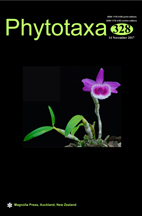Abstract
Ophiocordyceps pathogens of ants (Hymenoptera) are considered to have a worldwide distribution. Species of Ophiocordyceps have been relatively poorly studied and there is little molecular data available in GenBank. Thus, fresh collections and sequence data are needed to improve the understanding of species in the genus. In this study, infected ant species were collected in northern Thailand and carefully studied. As a result, O. thanathonensis is introduced as a new species. The morphology of O. thanathonensis differs from related species in the genus in having smaller ascomata, shorter asci, shorter ascospores and curved secondary ascospores. A reference specimen for O. pseudolloydii is also designated with sequence data. Phylogenetic analyses using maximum likelihood and Bayesian combined LSU, SSU, ITS, TEF1α and RPB1 sequence data show the placement of O. thanathonensis (new species) and O. pseudolloydii (reference specimen) within the Ophiocordyceps clade.

